- Why Do Tree Leaves Stay on the Tree Branches in Autumn?
- 1. Weather Conditions
- 2. Drought or Water Stress
- 3. Nutrient Deficiency
- 4. Environmental Factors
- 5. Genetic Variation
- The Impact of Temperature and Weather Conditions on Autumn Leaf-Falling
- Temperature
- Weather Conditions
- Conclusion
- The Role of Tree Species and Leaf Characteristics in Leaf-Falling Process
- Tree Species
- Leaf Characteristics
- Considerations for Leaf Removal
- When Should Tree Leaves Fall Naturally?
- 1. Seasonal Changes
- 2. Leaf Senescence
- 3. Variability
- 4. Signs of Natural Leaf Fall
- Understanding the Differences Between Deciduous and Evergreen Trees
- Deciduous Trees
- Evergreen Trees
- Conclusion
- Factors Influencing the Timing of Leaf-Falling in Different Tree Species
- 1. Tree Physiology
- 2. Photoperiod
- 3. Environmental Conditions
- 4. Tree Health and Stress
- 5. Genetic Factors
- Should You Remove Tree Leaves That Haven’t Fallen?
- 1. Depends on the Tree Species
- 2. Maintenance of Yard Appearance
- 3. Potential Benefits for the Tree
- 4. Consider Environmental Factors
- Conclusion
- The Pros and Cons of Leaf Removal
- Pros
- Cons
- Considerations for Leaf Removal in Different Landscaping Situations
- 1. Timing
- 2. Leaf Thickness
- 3. Lawn or Garden Preference
- 4. Tools and Techniques
- Questions and Answers:
- What should I do if the tree leaves haven’t fallen yet?
- How long should I wait for the tree leaves to fall?
- Is it normal for tree leaves to not fall off?
- What could be the reasons for tree leaves not falling?
- Should I remove the leaves if they haven’t fallen?
- Can I leave the tree leaves on the ground if they haven’t fallen yet?
- Videos: Will Citrus Trees Flower And Fruit After Losing Leaves? | Common Potted Citrus Tree Problems
The changing colors of leaves in autumn is a beautiful sight to behold. However, sometimes trees hold onto their leaves well into the winter months. This can leave homeowners wondering if they should take action and remove these lingering leaves from their trees or if they should just leave them be.
There are several factors to consider when deciding whether or not to remove those stubborn leaves. One important factor is the type of tree. Certain species of trees, such as oak or beech trees, tend to hold onto their leaves longer than others. This is a natural process for these trees and does not necessarily indicate any health issues.
Another factor to consider is the impact that the leaves may have on your property. If the leaves are causing issues, such as clogging gutters or covering walkways, it may be necessary to remove them. Additionally, if the leaves are smothering the grass or other plants, it may be beneficial to clear them away to prevent any potential damage.
While removing leaves can be a tedious task, it’s important to weigh the potential benefits against the effort required. Clearing away leaves can promote the overall health of your trees and prevent the growth of mold or fungus. It can also improve the appearance of your property and make it safer to navigate.
Ultimately, the decision to remove tree leaves that haven’t fallen is a personal one. If you are unsure, it’s always best to consult with a professional arborist who can assess the situation and offer guidance based on their expertise. Whether you choose to remove the leaves or let nature takes its course, remember that it’s all part of the cycle of life and the beauty of the changing seasons.
Why Do Tree Leaves Stay on the Tree Branches in Autumn?
During the autumn season, it is common for trees to shed their leaves in preparation for the colder months ahead. However, there are instances where tree leaves may not fall off the branches as expected. There are several reasons why this might occur.
1. Weather Conditions
Unseasonably warm weather during the fall can delay the natural leaf-colouring process and the subsequent leaf drop. When temperatures remain mild, trees may retain their leaves for a longer period of time.
2. Drought or Water Stress
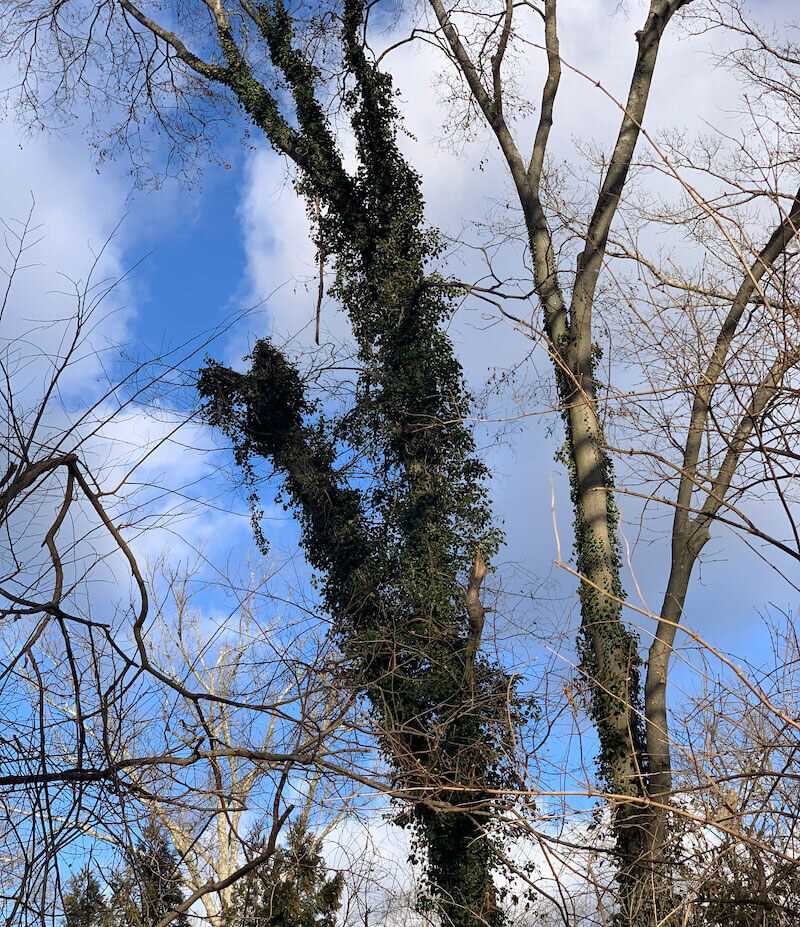
Trees experiencing drought or water stress may hold on to their leaves longer in an effort to conserve moisture. When a tree lacks sufficient water, it may not have the energy to trigger the normal physiological processes that lead to leaf drop.
3. Nutrient Deficiency
If a tree is lacking essential nutrients, such as nitrogen or phosphorus, it may hold on to its leaves longer. The tree may delay shedding its leaves in an attempt to extract as many nutrients as possible before the onset of winter.
4. Environmental Factors
Various environmental factors can contribute to leaves staying on tree branches in autumn. These factors include changes in light exposure, air pollution, and damage caused by pests or diseases. All of these can disrupt the normal leaf shedding process.
5. Genetic Variation
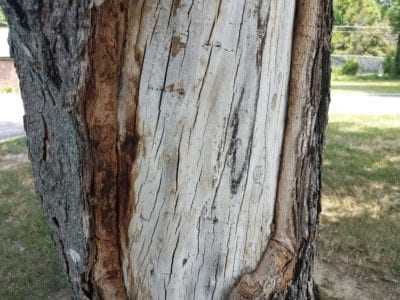
Some tree species are naturally inclined to hold on to their leaves longer than others. This genetic variation can lead to differences in leaf drop times between different types of trees. Certain species, such as oaks, beeches, and hornbeams, are known for retaining their leaves well into winter.
In conclusion, there can be several reasons why tree leaves may not fall off the branches during the autumn season. Weather conditions, drought, nutrient deficiency, environmental factors, and genetic variation can all play a role in determining when and if the leaves will drop. It is important to monitor the health of the tree and provide any necessary care to promote leaf drop and overall tree vitality.
The Impact of Temperature and Weather Conditions on Autumn Leaf-Falling
Autumn is a season known for its beautiful foliage, with trees shedding their leaves in stunning shades of red, orange, and yellow. However, the timing of leaf-falling can vary depending on several factors, including temperature and weather conditions.
Temperature
Temperature plays a significant role in the process of leaf-falling in autumn. As temperatures start to drop, deciduous trees receive signals to cease chlorophyll production. Chlorophyll is the pigment responsible for the green color of leaves and is essential for photosynthesis. When chlorophyll production slows down and eventually stops, other pigments, such as carotenoids and anthocyanins, become more visible, giving leaves their vibrant fall colors.
When temperatures remain mild during the autumn months, this process can be delayed, and leaves may persist on trees for a more extended period. However, if a sudden frost or freeze occurs, it can damage the cell walls of leaves, leading to their premature dropping. Additionally, extreme heat or drought conditions can cause leaves to wither and fall prematurely.
Weather Conditions
Weather conditions, such as wind and rain, can also influence the timing of leaf-falling. Strong winds can accelerate the process by blowing leaves off trees, especially if the leaves have already weakened due to temperature changes. Similarly, heavy rain can saturate the ground and loosen the roots, causing trees to shed their leaves prematurely.
In contrast, more stable weather conditions with minimal wind and rainfall can prolong leaf retention on trees. This is often seen in regions with a longer, mild autumn, where the leaves may remain on the trees well into late fall or even winter.
Conclusion
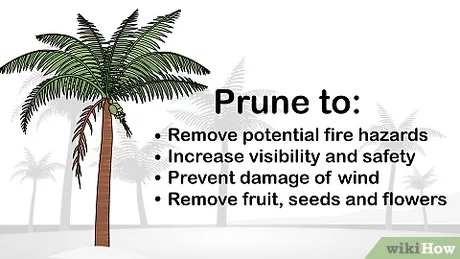
The timing of leaf-falling in autumn is influenced by a combination of temperature and weather conditions. While cooler temperatures and stable weather can prolong leaf retention, sudden changes, such as frost or strong winds, may cause leaves to drop prematurely. Appreciating the impact of temperature and weather on autumn foliage can help us better understand and enjoy the beauty of this season.
The Role of Tree Species and Leaf Characteristics in Leaf-Falling Process
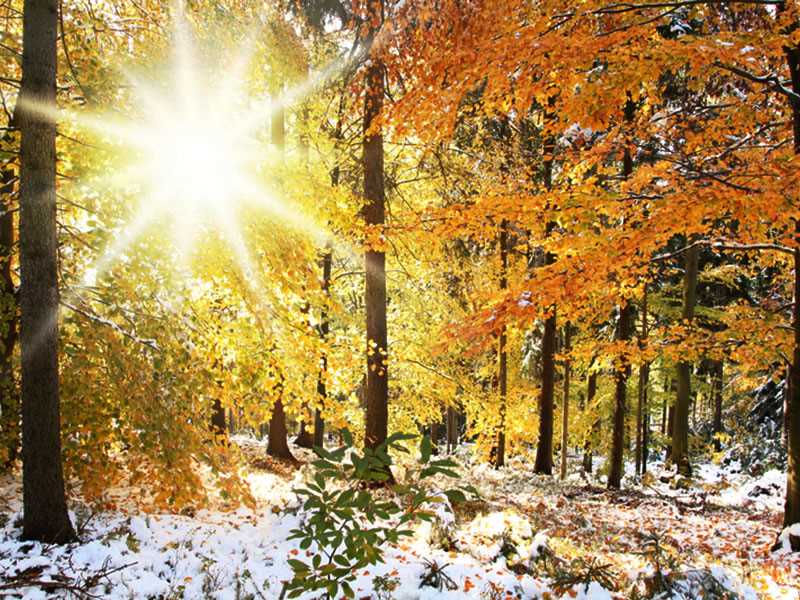
Tree leaves falling is a natural process that occurs in the autumn season. However, the timing and duration of leaf-falling can vary depending on the species of tree and the characteristics of its leaves. Understanding these factors can help homeowners determine whether or not to remove fallen leaves from their yards.
Tree Species
Different tree species have different leaf-falling patterns. Some trees, such as deciduous trees, shed their leaves in the autumn, while evergreen trees retain their leaves throughout the year. Deciduous trees lose their leaves as a strategy to conserve energy during the colder months when sunlight and water are limited. The timing of leaf-falling for deciduous trees can vary, with some trees starting to shed leaves earlier in the season than others.
Leaf Characteristics
The characteristics of tree leaves can also affect the leaf-falling process. The size, shape, and thickness of leaves can influence how easily they detach from the tree branches. Broad, flat leaves, such as those found on maple or oak trees, typically fall more quickly than small, needle-like leaves, such as those on pine or spruce trees. Additionally, the thickness of leaves can impact how long they take to decompose once they have fallen.
Furthermore, the color of tree leaves can play a role in the leaf-falling process. As the days become shorter and temperatures cooler in the autumn, the production of chlorophyll, which gives leaves their green color, decreases. This causes other pigments, such as anthocyanins and carotenoids, to become more visible, resulting in the vibrant colors associated with fall foliage. The breakdown of chlorophyll and the presence of these pigments can weaken leaf attachments, contributing to their eventual fall from the tree.
Considerations for Leaf Removal
When determining whether or not to remove fallen leaves from your yard, it is important to consider the specific tree species and leaf characteristics present. Some species may have leaves that decompose relatively quickly and enrich the soil with nutrients, making leaf removal unnecessary. However, in other cases, an excessive build-up of leaves can prevent sunlight and air from reaching the grass, potentially leading to lawn issues. Additionally, large piles of wet leaves can create an ideal environment for mold and pest infestation.
Ultimately, the decision to remove fallen leaves should be based on the specific circumstances of your yard and the advice of professionals or local authorities. Regular raking or using a mulching lawn mower to shred the leaves can help reduce their impact on the lawn, while still benefiting the soil. Additionally, using the fallen leaves as compost or mulch in other areas of the garden can provide a sustainable solution to leaf management.
When Should Tree Leaves Fall Naturally?
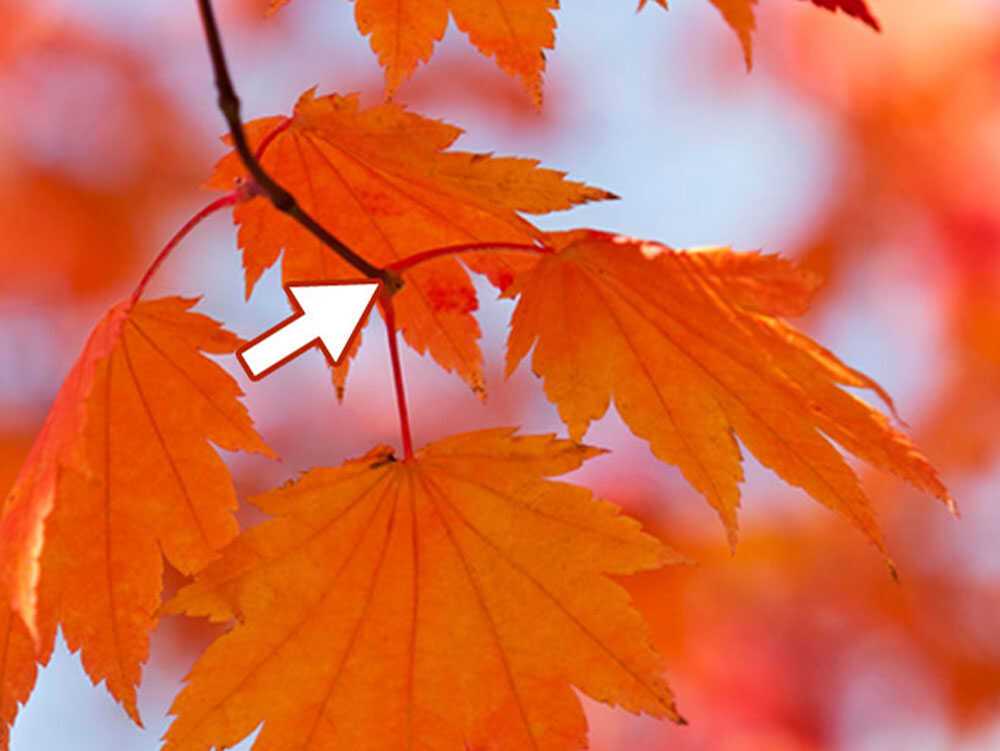
Understanding when tree leaves should fall naturally can help you determine if the leaves on your trees are late in dropping. While the precise timing of leaf fall can vary depending on factors like tree species and climate, there are some general patterns to consider.
1. Seasonal Changes
Most trees lose their leaves in the fall as part of their natural cycle. The process is triggered by changes in daylight and temperature. As days shorten and temperatures drop, trees prepare for winter by shedding their leaves.
2. Leaf Senescence
Leaf senescence is the term used to describe the aging and death of leaves. As the trees prepare for winter, they begin to shut down the food production process. The chlorophyll in the leaves breaks down, revealing the pigments that give the leaves their autumn colors. Eventually, the leaves become weak and detach from the branches, falling to the ground.
3. Variability
While most trees follow a seasonal pattern, there can be significant variability within and between tree species. Some trees may drop their leaves earlier or later than others based on factors like genetics and local climate conditions. Additionally, external factors such as drought or disease can cause leaves to drop prematurely.
4. Signs of Natural Leaf Fall
When leaves fall naturally, they typically show signs of aging and color change. The leaves may turn yellow, orange, red, or brown before falling off the tree. If the leaves on your tree have not changed color and are still green, it may indicate that they have not reached their natural point of senescence.
In conclusion, tree leaves should fall naturally in the fall as part of the tree’s seasonal cycle. While there can be variability in the timing of leaf fall, the changing colors and signs of aging are usually indicators that the leaves are ready to drop. If your tree’s leaves have not fallen and do not show signs of senescence, it may be worth investigating further to determine the cause.
Understanding the Differences Between Deciduous and Evergreen Trees
When it comes to trees, there are two main types: deciduous and evergreen. Understanding the differences between these two types of trees can help you better care for and maintain the trees in your yard or garden.
Deciduous Trees
Deciduous trees are trees that shed their leaves annually. They go through a cycle of growth and dormancy, losing their leaves during the winter months. Some common examples of deciduous trees include oak, maple, birch, and ash trees.
One of the most distinctive characteristics of deciduous trees is their seasonal color changes. In the fall, the leaves of deciduous trees turn vibrant shades of red, orange, and yellow before eventually falling off. This creates a beautiful display of color that is often associated with the autumn season.
Deciduous trees are well-suited for areas with distinct seasons, as they are able to adapt to changes in temperature and climate. They have evolved to conserve energy during the winter by shedding their leaves, reducing water loss and protecting themselves from freezing temperatures.
Evergreen Trees
Evergreen trees, on the other hand, are trees that retain their leaves throughout the year. They do not go through a period of dormancy and continue to photosynthesize and grow even during the winter months. Common examples of evergreen trees include pine, spruce, fir, and cedar trees.
Unlike deciduous trees, evergreen trees do not change color and shed their leaves. Instead, their leaves or needles remain green and intact year-round. This allows them to continue the process of photosynthesis and retain moisture throughout the year.
Evergreen trees are often found in regions with milder climates or in areas where the growing season is longer. They are able to withstand cold temperatures and continue to provide shade and privacy even during the winter months.
Conclusion
- Deciduous trees shed their leaves annually and go through seasonal color changes.
- Evergreen trees retain their leaves throughout the year and do not change color.
- Deciduous trees are well-suited for areas with distinct seasons, while evergreen trees thrive in regions with milder climates.
By understanding the differences between deciduous and evergreen trees, you can choose the right type of tree for your specific needs and ensure proper care and maintenance throughout the year.
Factors Influencing the Timing of Leaf-Falling in Different Tree Species
Various factors play a role in determining when leaves fall from different tree species. Understanding these factors can shed light on why some trees retain their leaves longer than others and can help in managing leaf removal practices.
1. Tree Physiology
The physiological characteristics of a tree species contribute significantly to the timing of leaf-falling. Deciduous trees, such as maple and oak, have specialized cells at the base of each leaf stem that gradually clog the flow of nutrients. As a result, the tree forms a protective layer, known as the abscission layer, which weakens the attachment between the leaf and the twig. This process contributes to the eventual shedding of the leaf.
In contrast, evergreen trees, like pine and spruce, have leaves that can persist for multiple years. Their foliage is typically adapted to withstand harsh conditions and may lose leaves sporadically rather than all at once.
2. Photoperiod
The changing length of daylight, known as the photoperiod, also influences the timing of leaf-falling in many tree species. As days shorten in autumn, trees receive signals to begin their preparations for winter. This includes the formation of the abscission layer and the eventual shedding of leaves. Different tree species have varying sensitivities to changes in photoperiod, leading to variations in the timing of leaf-falling.
3. Environmental Conditions
Environmental factors, such as temperature and moisture, can affect the timing of leaf-falling. Cooler temperatures and reduced moisture availability signal trees to prepare for winter dormancy. Drier conditions can cause leaves to fall earlier, while wetter conditions may delay leaf-falling.
4. Tree Health and Stress
The overall health and stress levels of a tree can influence the timing of leaf-falling. Trees that are under stress, such as those affected by diseases, pests, or drought, may shed their leaves earlier than healthy trees. Conversely, trees that are thriving and well-nourished may retain their leaves longer.
5. Genetic Factors
Genetic factors also play a role in the timing of leaf-falling. Tree species can have different genetic traits that determine when their leaves are shed. For example, certain species of birch trees are known to drop their leaves early, while other species may hold onto their foliage for longer periods.
Overall, the timing of leaf-falling in different tree species is influenced by a combination of physiological, environmental, genetic, and photoperiod factors. By understanding these factors, arborists and homeowners can better manage leaf removal and appreciate the natural processes occurring in their trees.
Should You Remove Tree Leaves That Haven’t Fallen?
If you have tree leaves that haven’t fallen from the trees yet, you may be wondering if you should remove them or just leave them be. While there is no one-size-fits-all answer to this question, there are a few factors you should consider when deciding what to do with the remaining tree leaves.
1. Depends on the Tree Species

The decision to remove tree leaves that haven’t fallen can depend on the species of the tree. Some tree species naturally retain their leaves for longer periods, while others shed them relatively quickly. For example, evergreen trees like pine and spruce trees retain their leaves throughout the year, and it is normal for them not to shed their leaves all at once. In contrast, deciduous trees like oak and maple trees typically shed their leaves in the fall.
2. Maintenance of Yard Appearance
If maintaining the appearance of your yard is important to you, you may choose to remove the remaining tree leaves. Leaves that have not fallen can make your yard look messy and unkempt, especially if most of the leaves have already fallen. Removing the remaining leaves can help maintain a clean and tidy yard, enhancing the overall aesthetic appeal.
3. Potential Benefits for the Tree
Leaves provide important nutrients to trees, so leaving them on the ground can actually benefit the tree. As the leaves decompose, they release essential nutrients back into the soil. This natural cycle of nutrient recycling can improve the tree’s health and overall growth. If you decide to leave the remaining leaves, consider mulching them or using them as compost to nourish your garden or other plants.
4. Consider Environmental Factors
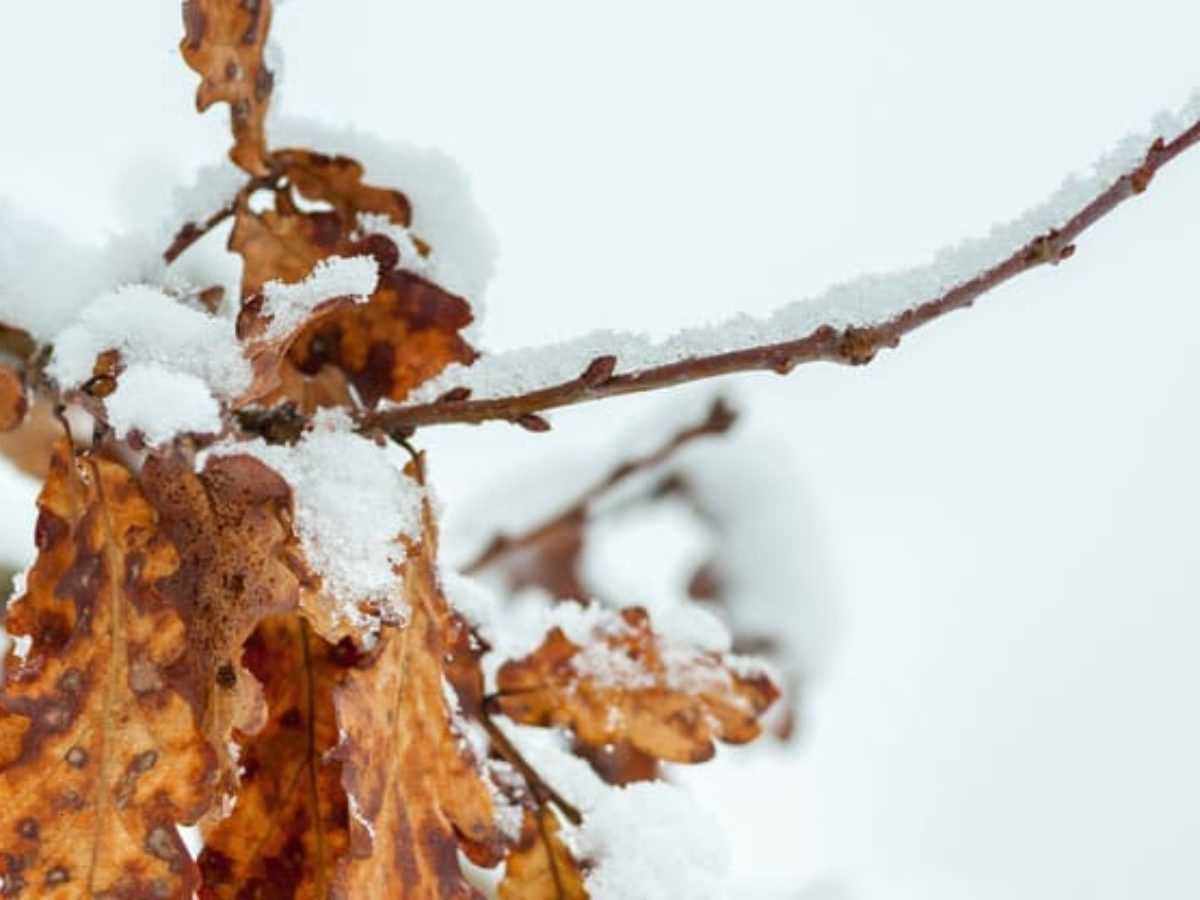
Environmental factors, such as weather conditions and the presence of pests or diseases, can also influence the decision to remove tree leaves. If the remaining leaves show signs of fungal infections, pest infestations, or diseases, it may be advisable to remove them to prevent the spread of these issues. Similarly, if the weather conditions are excessively wet, and the leaves are at risk of developing mold or rot, it might be best to remove them for the tree’s health.
Conclusion
Ultimately, the decision to remove tree leaves that haven’t fallen depends on various factors, including the tree species, your yard’s appearance, potential benefits for the tree, and environmental factors. Assessing these factors will help you make an informed decision that takes into account both the aesthetics of your yard and the health of the tree.
The Pros and Cons of Leaf Removal
Pros
- Curb Appeal: Removing fallen leaves can improve the aesthetics of your property and enhance its curb appeal. A clean and tidy yard can make a good impression on visitors and potential buyers.
- Prevents Pest Infestations: Leaf piles can provide a cozy hiding place for pests such as rodents and insects. Regular leaf removal can help prevent infestations and keep your yard pest-free.
- Preserves Lawn Health: Excessive layers of leaves can block sunlight, air, and moisture from reaching the grass and soil. By removing the leaves, you are allowing your lawn to breathe and receive the necessary nutrients for healthy growth.
- Easy Lawn Maintenance: A clear lawn free from leaves makes regular maintenance tasks, such as mowing and fertilizing, easier and more effective. It reduces the risk of damaging your lawn equipment and ensures an even distribution of nutrients.
Cons
- Time and Effort: Removing leaves can be a time-consuming and labor-intensive task, especially if you have a large yard with many trees. It may require raking, bagging, or using a leaf blower. If you don’t have the time or physical ability, it may be challenging to keep up with leaf removal.
- Potential Damage: Raking or using certain types of leaf blowers can cause damage to your lawn if not done correctly. It’s important to use proper techniques and tools to avoid disrupting the grass or creating bare patches.
- Lost Nutrients: Fallen leaves can act as a natural mulch, providing nutrients to the soil as they decompose. By removing the leaves, you may be depriving your lawn of these beneficial nutrients, which can affect its overall health and vitality.
| Pros | Cons |
|---|---|
| Improves curb appeal | Time and effort |
| Prevents pest infestations | Potential damage |
| Preserves lawn health | Lost nutrients |
| Easy lawn maintenance |
Considerations for Leaf Removal in Different Landscaping Situations
When it comes to leaf removal in your landscaping, there are a few factors to consider depending on the specific situation. Whether the tree leaves haven’t fallen yet or they have fallen and accumulated on the ground, here are some considerations to keep in mind:
1. Timing
- Before deciding to remove tree leaves, consider the time of the year and the specific type of tree you have in your landscape. Some trees shed their leaves earlier in the season, while others may hold onto their leaves for longer.
- If the tree leaves haven’t fallen yet, it might be best to wait until they have all dropped to avoid repeated leaf removal tasks.
- If the leaves have fallen and are already on the ground, you can consider removing them based on the timing that works best for you.
2. Leaf Thickness
The thickness of the leaves can affect your decision to remove them. If the leaves are thin and not too densely packed, they may break down naturally and provide nutrients to the soil as they decompose.
However, if the leaves are thick and densely packed, they can create a layer that prevents air and water from reaching the soil. In this case, it might be preferable to remove them to maintain the health of your landscaping.
3. Lawn or Garden Preference
Consider your preference for the appearance and health of your lawn or garden.
- If you prefer a pristine and manicured lawn, you may want to remove all the fallen tree leaves to maintain a clean aesthetic.
- If you have a garden with delicate plants that may struggle with excessive leaf coverage, it may be beneficial to remove the leaves to prevent smothering and allow sunlight and air to reach the plants.
- On the other hand, if you have a more naturalistic approach to landscaping, leaving some leaves on the ground can provide mulch and contribute to a healthy ecosystem.
4. Tools and Techniques
Consider the tools and techniques available to you for leaf removal.
- If you have a small yard and the amount of leaves is manageable, manual raking or using a leaf blower can be effective methods to remove the leaves.
- For larger yards or heavier leaf coverage, you may need to consider using a lawn vacuum or hiring professional landscaping services.
By considering these factors, you can make an informed decision about whether or not to remove tree leaves in your specific landscaping situation. Remember to assess the timing, leaf thickness, lawn or garden preference, and available tools before taking action.
Questions and Answers:
What should I do if the tree leaves haven’t fallen yet?
If the tree leaves haven’t fallen yet, you can wait for them to fall naturally. It is important to note that different tree species have different leaf-falling times. However, if it is already late into the winter season and the leaves still haven’t fallen, you may consider taking some action.
How long should I wait for the tree leaves to fall?
The length of time you should wait for the tree leaves to fall depends on the specific tree species. Some trees shed their leaves early in the fall, while others may hold onto their leaves longer. As a general rule, most deciduous trees should have shed their leaves by mid to late fall.
Is it normal for tree leaves to not fall off?
It is not normal for tree leaves to not fall off if the tree is healthy. Trees rely on the changing seasons and environmental cues to trigger the shedding of their leaves. If the leaves are still clinging to the tree late into the winter season, it may indicate an underlying issue or stress on the tree.
What could be the reasons for tree leaves not falling?
There are several possible reasons for tree leaves not falling. It could be due to a lack of cold temperatures, which are necessary to trigger leaf drop. Other factors such as excessive moisture, nutrient deficiencies, or diseases can also cause leaves to stay on the tree longer than usual. If you observe this problem, it is recommended to consult with an arborist for a proper diagnosis and treatment plan.
Should I remove the leaves if they haven’t fallen?
If the leaves haven’t fallen and it is already late into the winter season, you may consider removing them. However, it is important to first identify the underlying cause of the leaf retention. If it is due to a problem with the tree’s health or environmental conditions, simply removing the leaves may not solve the issue. Consult with an arborist to determine the best course of action.
Can I leave the tree leaves on the ground if they haven’t fallen yet?
If the tree leaves haven’t fallen yet, but it is already late into the winter season, it is generally best to remove the leaves from the ground. Leaving a thick layer of leaves on the ground can smother the grass and hinder its growth. Additionally, the decaying leaves can create a breeding ground for pests and diseases. It is recommended to clean up the fallen leaves to maintain the overall health of your yard.







